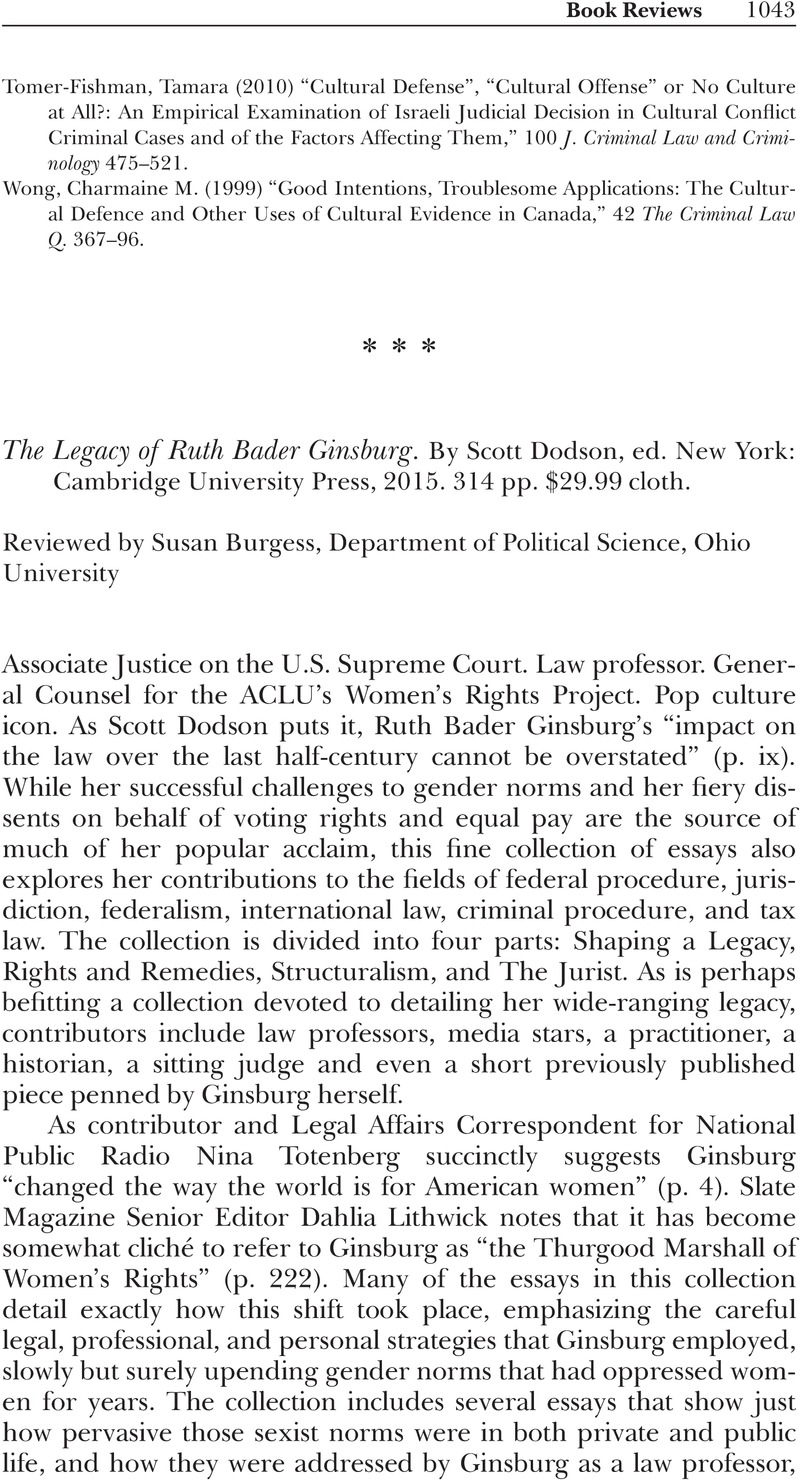No CrossRef data available.
Article contents
The Legacy of Ruth Bader Ginsburg. By Scott Dodson, ed. New York: Cambridge University Press, 2015. 314 pp. $29.99 cloth.
Review products
The Legacy of Ruth Bader Ginsburg. By Scott Dodson, ed. New York: Cambridge University Press, 2015. 314 pp. $29.99 cloth.
Published online by Cambridge University Press: 01 January 2024
Abstract
An abstract is not available for this content so a preview has been provided. Please use the Get access link above for information on how to access this content.

- Type
- Book Reviews
- Information
- Copyright
- © 2016 Law and Society Association.
References
Carmon, Irin, & Knizhnik, Shana (2015) Notorious RBG: The Life and Times of Ruth Bader Ginsburg. New York: Harper Collins.Google Scholar


